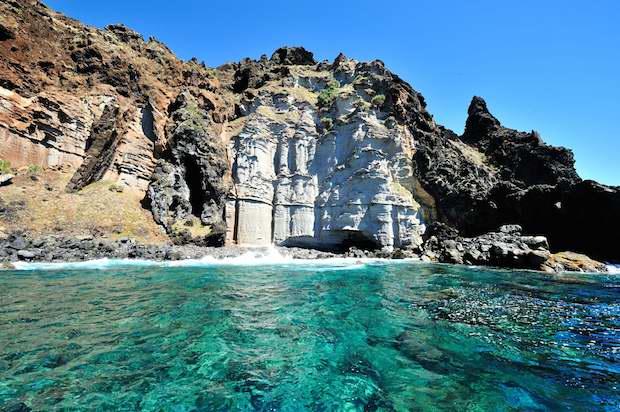
The Pitcairn Islands, a U.K. overseas territory, is made up of four islands: Pitcairn, Henderson, Oeno, and Ducie. The territory lies 4,500 kilometers (about 2,800 miles) from New Zealand, its closest landmass, making it one of the world’s most remote island groups. TONY PROBST
The world’s largest marine reserve has been created by the British government, offering unprecedented protection to more than 1,200 species of marine mammals, fish and sea birds in the South Pacific.
The 322,138-square-mile reserve around the Pitcairn Islands is roughly three-and-half times the size of the United Kingdom and located in one of the world’s most remote locations. It was announced as part of Chancellor George Osborne’s pre-election budget following a proposal to create the reserve by the Pew Charitable Trusts and the National Geographic Society.

“With this designation, the United Kingdom raises the bar for protection of our ocean and sets a new standard for others to follow,” said Matt Rand, director of Global Ocean Legacy, a project of Pew and its partners that advocates for establishment of the world’s great marine parks. “The United Kingdom is the caretaker of more than 6 million square kilometers of ocean — the fifth-largest marine area of any country. Through this designation, British citizens are playing a vital role in ensuring the health of our seas.”
A March 2012 scientific survey of Pitcairn’s marine environment, led by the National Geographic Pristine Seas project in partnership with Pew, documented an untouched ecosystem that includes the world’s deepest known living plant, a species of encrusting coralline algae found 1,253 feet below sea level. The reserve also protects one of the two remaining raised coral atolls on the planet as well as 40 Mile Reef, the deepest and most well developed coral reef known in the world.
“Our first-ever scientific exploration of the area revealed entirely new species as well as an abundance of top predators like shark,” said National Geographic Explorer-in-Residence Enric Sala, head of Society’s Pristine Seas project. “It was like traveling to a new world full of hidden and unknown treasures, a world that will now be preserved for generations to come.”

In an effort to protect the area from illegal fishing and other criminal activities, the Bertarelli Foundation also announced a five-year commitment to support the monitoring of the Pitcairn Islands Marine Reserve as part of Pew’s Project Eyes on the Seas. Using a satellite monitoring system, developed through collaboration between Pew and the U.K.-based company Satellite Applications Catapult, government officials will be able to detect illegal fishing activity in real time.
It is the first time a reserve has been created that incorporates this level of monitoring and enforcement. And its formation adds to a growing push by Western governments to protect the oceans from overfishing, pollution and unchecked development.
In April 2010, the British government created the Chagos Marine Reserve in the Indian Ocean — until today the largest continuous, fully protected area of ocean in the world. Most recently, in September 2014, President Barack Obama significantly expanded the Pacific Remote Islands National Marine Monument, first created by President George W. Bush, in the south-central Pacific.





